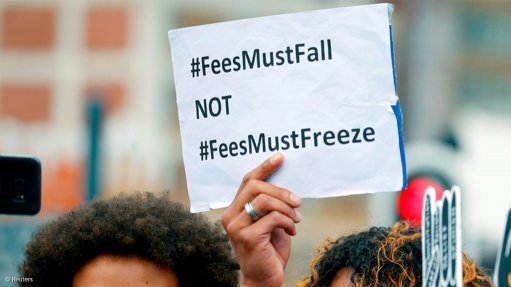
Despite South Africa’s ruling party, the African National Congress, earlier this year vowing that free higher education could become a reality as early as 2018, Wednesday’s medium-term budget policy statement (MTBPS) revealed glaring gaps in funding for the country’s students.
According to the MTBPS, the National Student Financial Aid Scheme (NSFAS) in 2016 gave 225 950 university students with a family income of less than R122 000 financial assistance, which amounted to 30% of undergraduate students.
“If NSFAS were to cover the full cost of study for the 30% of undergraduates who currently qualify, the scheme would require R10.7-billion in the 2018 academic year, in addition to the R11.4-billion currently available,” National Treasury said.
Proposals to extend cover to middle-income households were being considered, but data was currently unreliable.
“Government is working with universities to verify the data.”
Currently NSFAS loans and bursaries only cover a portion of the full costs of study.
The funding shortfall were government to fully fund the 30% of undergraduates would grow from R10.7-billion in 2018 to R12.6-billion in 2019, R14.8-billion in 2020 and R17.3-billion in 2021.
These shortfalls rise sharply were government to fund 75% of the country’s undergraduates, from R40.7-billion in 2018 to R46-billion in 2019, R52-billion in 2020, and R58.8-billion in 2021.
There are also gaps in funding for technical and vocational education and training (TVET) colleges.
In 2016, NSFAS provided 225 557 TVET college students whose family’s income is below the R122 000 threshhold with financial assistance.
This funded around 70% of full-time students.
Covering all TVET students would require an additional R7.1-billion in 2018, which would accumulate to R23.5-billion over the next three years.